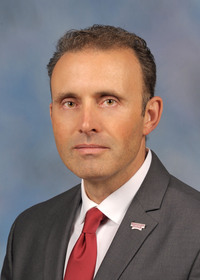Economic Impact of Forestry and Forest Products on Mississippi's Fourth Congressional District
Forestry and the forest products industry have a substantial impact on the economy of Mississippi’s Fourth Congressional District. The purchase of goods and services by this industry and its employees spurs economic activity in other sectors of the economy. It is estimated that forestry and the forest products industry have a total economic impact of $1.5 billion in total industry output, $522.7 million in value-added, $334.8 million in wages and salaries, and 7,237 jobs. In addition, the tax impact was estimated to be $99.5 million, with $57.3 million in federal and $42.2 million in state and local taxes.
These results were obtained using IMpact Analysis for PLANning (IMPLAN), an input-output model. Using input-output analysis to track how the inputs of one sector of the economy are the outputs of other sectors can allow for a greater appreciation of the economic importance of a sector or group of sectors to the overall economy. Using 2011 data and the IMPLAN model, this study estimates the total economic contribution of forestry and the forest products industry within Mississippi’s Fourth Congressional District.
This is measured by examining how spending by the forestry and forestry products industry impacts the entire economy using four key statistics: total industry output (total value of production), value-added (payments made to workers, interest, profits, and indirect business taxes), wages and salaries (employee compensation), and employment (the number of full- and part-time jobs). For each of the four key statistics the direct, indirect, and total economic impacts were estimated. The direct impacts are the actual expenditures and employment of the forestry and forest products industry sectors (forestry services, logging, solid wood products, pulp and paper, and wood furniture manufacturing). The direct impacts are then used to measure the purchase of goods and services by the forest products industry’s supporting industries (i.e., indirect impact) and the purchases of consumer goods and services by employee households associated with direct and indirect effects (i.e., induced impact). These impacts together give the total economic impact.
The IMPLAN model tracks inter-industry spending and summarizes the economy into a 440-industry sector model. For reporting purposes, the results of this analysis were simplified by combining the 440 sectors to 17 sectors representing the entire economy, including the five forestry- and forest products-related sectors.1
The forestry and forest products impacts on the economy of Mississippi’s Fourth Congressional District are summarized below and detailed in Table 1.
Forest-related economic activity generated 7,237 jobs and $334.8 million in income during 2011. That’s 2 percent of jobs and 2 percent of income in the district. Forestry and the forest products industry generated $1.5 billion or about 2.4 percent of economic output in the district. The value of all goods and services produced is defined as total output. Value-added amounted to more than $522.7 million, or about 1.9 percent of all value-added in the district. Value-added represents the creation of new wealth.
Forest-related economic activity contributed an estimated $99.5 million in tax revenue for federal, state, and local governments. This total includes estimated tax revenues of $57.3 million for federal and $42.2 million for state and local governments.
1 For more detail on combining the 440 sectors to 17 sectors, please see The Economic Impact of Forestry and the Forest Products Industry on Mississippi’s Congressional Districts, Forest and Wildlife Research Center, Research Bulletin FO 438, Mississippi State University.
Information Sheet 1964 (POD-09-18)
By James E. Henderson, PhD, Professors and Head, Coastal Research and Extension Center, and Ian A. Munn, PhD, Associate Dean and Professor, Forestry.
The Mississippi State University Extension Service is working to ensure all web content is accessible to all users. If you need assistance accessing any of our content, please email the webteam or call 662-325-2262.





